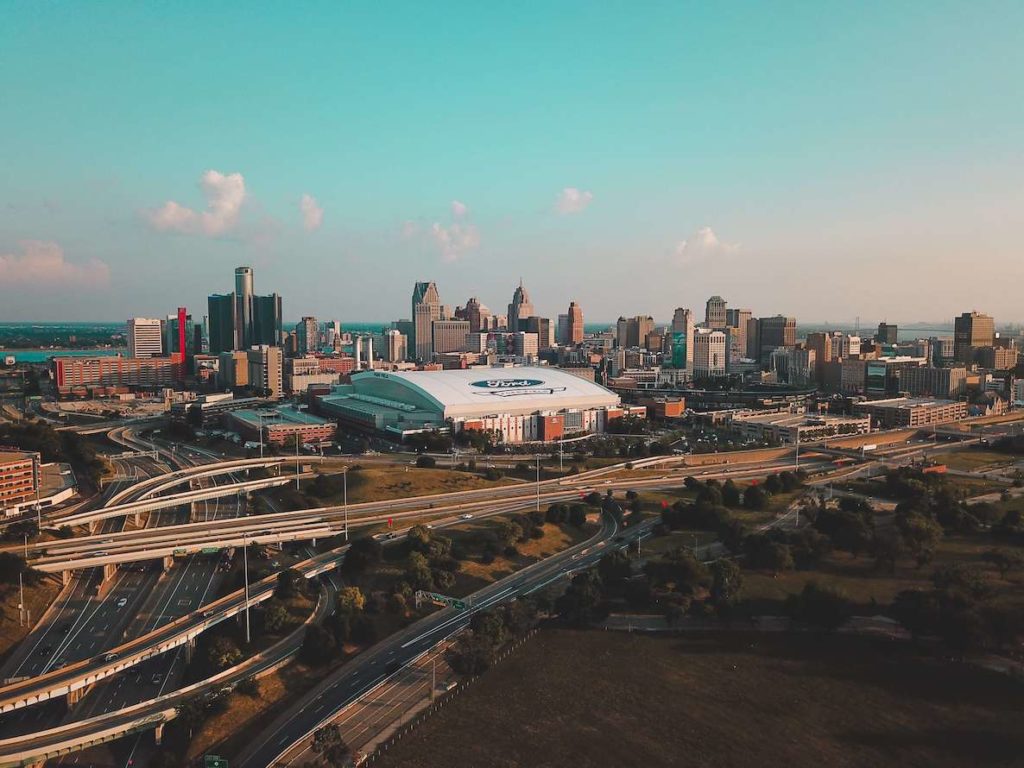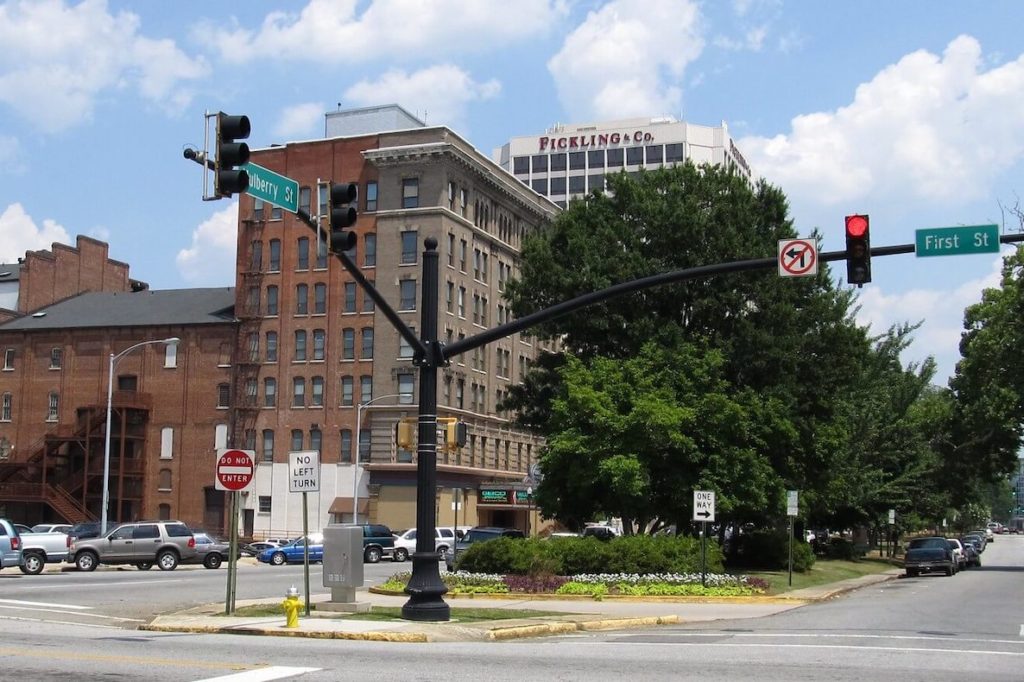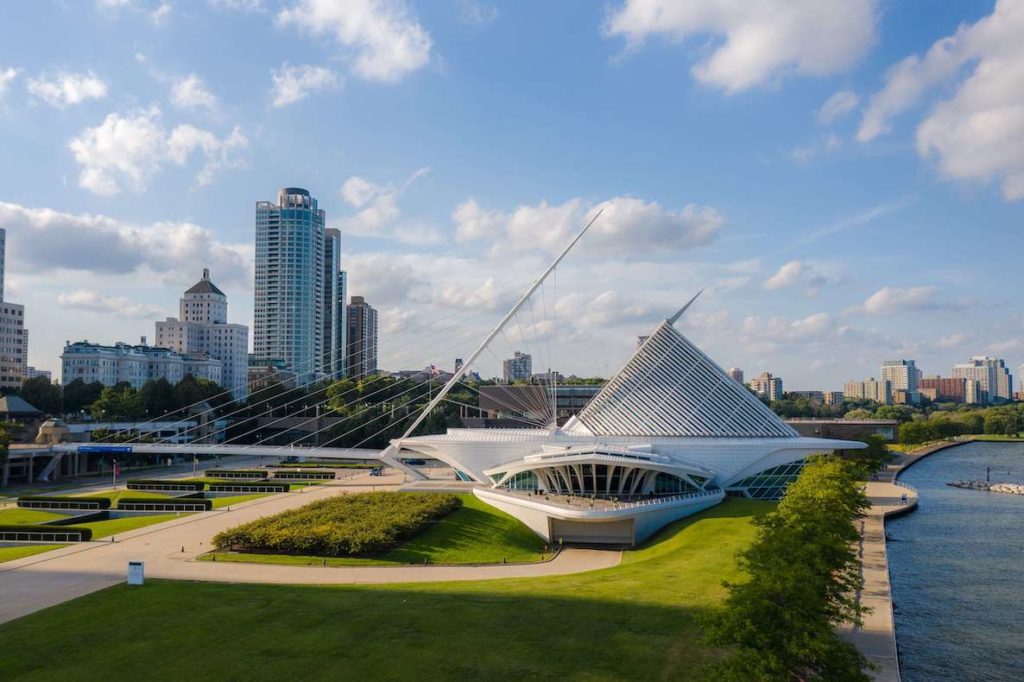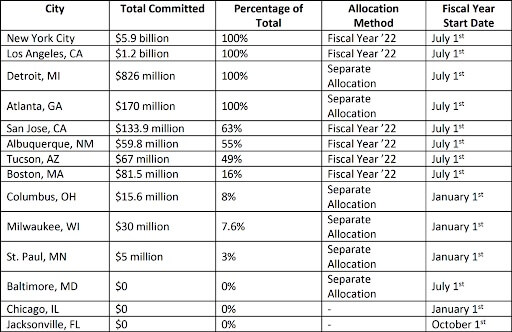In July, we wrote a memo detailing how states are spending their State and Local Fiscal Recovery Funds (SLFR funds). Here we follow-up on this piece by examining how cities are using these flexible funds, focusing on three areas where City Halls are moving forward with their SLFR funds:
-
- A description of the different approaches that cities are taking to allocate funds
- An overview of transparency and documentation of ARPA flexible funds
- A look into trends around timelines of city appropriations and how ARPA funding has fit into the traditional budget cycles of cities
Four emerging models for how cities are managing Covid relief funds
Cities are currently grappling with how they should prioritize competing programs, initiatives, and ideas. SLFR funds are a once-in-a-generation opportunity and cities have to contend with balancing relief and recovery—supporting those hit hardest by the pandemic while also investing in the economic, social and physical infrastructure to ensure a brighter future for all.
What should be the focus areas? Who should have a voice in what gets funded? How much should different priority areas receive? While we can’t observe the processes in every city—and certainly these processes vary depending on size and unique local political considerations—we pull out four emblematic examples that are at the forefront of emerging models of local recovery.
DETROIT, MICHIGAN

Approach: Top-down, mayor-led allocations
In Detroit, Mayor Mike Duggan has worked with the City Council to allocate all $826 million of the flexible funds the city will be receiving through ARPA. This is uncommon but not unprecedented ( New York City’s recovery budget, for example, did something similar). Detroit is emblematic of a process that has played out in other cities as well: A city’s mayor releases a proposal, which is then workshopped and refined by other local stakeholders and the City Council to reach a final allocation of resources.
In May, Mayor Duggan released an initial proposal to spend the flexible funding. That proposal also included plans to gather feedback from other decision-makers and the community at large. Over the course of the next several weeks, the Mayor’s administration led a rigorous engagement process that included over 60 community meetings, additional meetings held by City Council members, a survey, and joint working groups between the Administration and City Council.
We understand collaboration is not always easy. It requires a full mindset change—from scarcity to plenty—and it requires clear decisions about which local, metropolitan or even regional entities lead on which opportunity.
These meetings highlighted opportunities to adjust both the technical processes of allocating funding and the programmatic focuses. Collaboration with different departments alerted them to potential problems in the original plan around oversight and city contracting. Many cities, including Detroit, have engaged legal staff and outside consulting firms, such as Guidehouse, to evaluate strategic and compliance-related questions around uses of SLFR funds in order to make swift and efficient allocation decisions.
Feedback from City Council and residents led to notable increases and decreases in the various pots of funding, including a $50 million increase in funding for employment and job training programs; a $14 million increase in funding towards programs and investments geared towards small businesses; and a $12 million increase in foreclosure prevention and assistance.
BALTIMORE, MARYLAND

Approach: Ground-up, community-generated projects
While Detroit characterizes the top-down approach that incorporates feedback along the way, Baltimore typifies a more ground-up, hands-off approach. Mayor Brandon Scott began by outlining five key priority areas for projects: Prioritizing Our Youth, Building Public Safety, Equitable Neighborhood Development, Clean and Healthy Communities, and Responsible Stewardship of City Resources. From there, community organizations and city agencies can submit project proposals that align with these priority areas with a minimum of $250,000. A full overview of Baltimore’s strategy is available here.
Both internal and external projects are reviewed by a team composed mostly of other agency staff according to a scoring rubric that rewards partnerships, equity, delineating and planning to mitigate risks, and more.
The benefits of this approach are a highly structured and rigorously evaluated approach that emphasizes what those closest to the community and city functions prioritize. City leaders can still maintain oversight and manage the funds according to an overarching vision, but the actual ideas come from the organizations that would ordinarily just be receiving the funds in a top-down system.
Of course, there are downsides. Because the onus is on city agencies and outside organizations, they now have to use valuable staff time and resources to come up with grant proposals that meet Treasury’s eligibility criteria (and which may or may not get funded or be coordinated in a unified strategy across city agencies).
Grassroots organizers in Cleveland, OH are urging an even more community-driven approach and seeking to ensure $30 million of the city’s $511 million in SLFR funds are allocated via a new participatory budgeting process that would be created for this purpose. It remains possible other cities will consider participatory budgeting as a mechanism for awarding some small subset of funds.
MACON, GEORGIA

Approach: Collaboration with local philanthropy and leveraging civic capital
While the flexible funds from ARPA are deeply valuable opportunities for cities to recover from the pandemic, they still require tough decisions to be made about where to spend and allocate resources. Given that SLFR funds must be spread among various competing priority areas—housing, business relief, gun violence prevention, vaccination campaigns—it may feel that even these unanticipated, once-in-a-generation types of investments aren’t enough. One way to grow the local pie is by engaging philanthropies.
In a time of abundant federal investments, local collaboration will be key to ensure money is spent in a way that fosters inclusive growth.
City leaders in Macon, GA collaborated with a major philanthropy with a local presence, the Knight Foundation, to leverage additional capital. This ensured that the dollars they invested in affordable housing would go further than just their ARPA allocation. The city government originally allocated $1.6 million dollars for two affordable housing initiatives—$600,000 for Historic Macon and $1 million for New Town Macon. The Knight Foundation matched their allocations 1:1, increasing the total amount invested in these two organizations to $3.2 million.
This is a prime example of the type of collaboration cities should be looking to do with philanthropies and other capital providers—CDFIs, private lenders, and federal and state government agencies. Coupling ARPA dollars with these outside sources of capital increases the amount of impact an appropriation has and frees cities up to do more with their other flexible funds.
MILWAUKEE, WISCONSIN

Approach: Investigating opportunities
Many other cities are more slowly rolling out their allocation process, leading with community and stakeholder engagement that will later culminate in a proposal from the mayor’s administration. This is fairly common in cities for whom the fiscal year begins on a date later than July 1st.
For instance, in Milwaukee, Mayor Tom Barrett created an ARP Leadership Team that’s responsible for gathering input from the community and coordinating with other government officials—including the Governor of Wisconsin and County Executive of Milwaukee County—to collaborate and leverage funding to maximize impact. Many other cities that have yet to allocate significant portions of the ARPA flexible funding have established similar sorts of advisory committees.
Transparency and community engagement is a work in progress
Overall, cities have been much better than states in engaging communities about how to use funds and transparently documenting the uses of those funds (though many state allocations of funds have gone to areas where community engagement doesn’t serve a function, like restoring unemployment trusts).
Seattle and Minneapolis provide models for other cities to replicate. In most other cities, local media appears to be the most effective way to learn about ARPA appropriations. It’s preferable for cities to publish their own information about allocations since they can ensure that all important information reaches the public and local stakeholders.
The National League of Cities has assembled an excellent tool to show how much each city in the country is receiving through the SLFR fund. However, due in part to the sheer number of cities in the U.S., there is not the same system for tracking local allocations on a national level that exists for states, where the National Conference of State Legislatures’ has developed a tracking system. This makes systematically and comprehensively evaluating city uses of funds a difficult endeavor.
What should be the focus areas? Who should have a voice in what gets funded? How much should different priority areas receive?
Despite the lack of rigorous documentation, an analysis of some of the largest cities reveals that many have barely begun to allocate their money. Important decisions will be made in the coming months and years—largely through the municipal budgeting process between the mayor and City Council—about how to allocate ARPA funding. Cities can look to one another for effective ways to manage, maximize, and generally spend their flexible funding.
In the interim, it is crucial for cities to keep up to date with the latest rules and updates from the Department of Treasury to avoid repaying funds. As with states, cities are bound to use funds in accordance with the interim final rule from the Department of Treasury and can refer to their regularly updated FAQ sheet for more information.
Budget Allocations

A handful of cities like Detroit, Atlanta, Philadelphia, Los Angeles, and New York City have allocated all or nearly all of the total flexible funding they will be receiving through the American Rescue Plan. For those that have moved quickly, the reasons are myriad. In some, such as New York and LA, outgoing mayors allocated the full amount in order to make their mark on use of the funds before leaving office. In others, like Philadelphia, nearly the full allocation was needed for budget remediation over multiple fiscal years, simplifying the process. Most, however, have allocated a portion of their funds, or none at all, as shown below.

The table above illustrates a trend in how cities are appropriating their SLFR flexible funds. Cities for whom the fiscal year began July 1st have already allocated significant portions of their flexible funding. These cities received their first tranches of SLFR funds and the guidance from the Department of Treasury while they were in the midst of their typical budget discussions between the mayor and City Council and were able to appropriate funds then.
RELATED: What $9.2 billion in government rescue funds means for Philly
Cities for whom the fiscal year begins January 1st (or some other date besides July 1st), however, tend to have either allocated no ARPA flexible funding at all, or have only funded very specific, time-sensitive projects. For instance, Columbus, OH used $15.6 million to augment an existing $4 million for a summer youth jobs program, and St. Paul, MN spent $5 million for immediate staffing needs in City Hall, including $2.7 million for the City Attorney’s office to handle a backlog of criminal cases. This group of cities will likely begin allocating larger portions of their funding when budget negotiations begin in earnest this fall and winter.
What’s next?
The cities we’ve highlighted provide a blueprint for effective management and use of SLFR flexible funds. Many cities have taken strides to be transparent about how they intend to spend—or are spending—flexible funds. Others have not been as transparent in the budget process and should look to cities like Minneapolis and Seattle as models.
It’s also clear that cities like Atlanta, Detroit, and New York City—where the mayor and City Council have fully appropriated all SLFR flex funds—are the exception, rather than the norm, among major cities. Very few cities have allocated all of their flexible funds, and as they move to allocate the remainder or start allocating in the first place, they can look to the models established by Detroit, Baltimore, Macon, and other cities to manage the funds.
Growing the pie beyond SLFR funds through stimulus command centers
We have focused here on the SLFR flex funds going to cities. As we’ve previously written, this is only one source among many federal funds in ARPA (and ARPA itself is just one in a series of planned federal investments in American cities and communities). As cities emerge from budget negotiations between the Mayor and City Council they would be well put to focus on other sources of ARPA funding that can be braided and blended alongside SLFR funds to grow the local pie.
This is not an easy task. After decades of prioritizing local needs amidst scarce funding, it is difficult to abruptly switch to prioritizing needs during an era of plentiful federal support. Doing so is an all-hands-on-deck task. Since January, we have proposed the idea of “ stimulus command centers” as a way to coordinate among—and leverage the unique strengths of—public, private, and civic leadership on the local level to drive this type of strategic thinking.
Alongside Accelerator for America, we’ve been working with a cohort of seven first-mover cities to establish stimulus command centers. As many of the programs in ARPA open, beyond the SLFR funds, now is the time to be establishing priorities and organizing local leadership to go after funds for locally strategic projects. We have established a Local American Recovery Resource Center to help support people through the process.
There are two programs especially of note, which require the full energies of public, private and civic stakeholders through a stimulus command center approach to ensure inclusive growth. The first is the State Small Business Credit Initiative (SSBCI), which will be allocated by states and which will require the energies of local capital providers to ensure that a diversity of capital products reach the full diversity of firms in a metro.
The second is the Economic Development Administration’s (EDA) $1 billion Build Back Better Regional Challenge. This challenge—whereby the EDA is using a phased model to invest in emerging sectoral clusters on a regional level—is acting as a catalyst for business, civic and public leadership to establish a clear innovation and cluster-focused vision for the region. The deadline for the first round of applications is fast approaching on October 19th, and collaboration is key to how the EDA is evaluating successful applications.
The bottom line
In a time of abundant federal investments, local collaboration will be key to ensure money is spent in a way that fosters inclusive growth. SLFR funds are the first in what will be a series of large federal investments in metro economies. City leadership has formed a series of new models to allocate and manage these funds—but for most cities the next budget cycle will be the crucial one.
More imminent deadlines are approaching for informing allocations of SSBCI and the EDA’s Build Back Better challenge; success in these programs will grow the local pie but it requires collaboration across sectors to achieve a strategic vision for local inclusive growth.
We understand collaboration is not always easy. It requires a full mindset change—from scarcity to plenty—and it requires clear decisions about which local, metropolitan or even regional entities lead on which opportunity. To a large extent, federal resources reward communities with established ecosystems that already design, finance and deliver initiatives around inclusive and sustainable growth.
As waves of federal funding proceed, codifying and scaling these models of governance and delivery will be essential if the country is truly going to “build back better.” To that end, reviewing the allocation of SLFR funds is only the beginning of the cross-city learning that will be a hallmark of this exceptional era of federal investment.
Bruce Katz is the founding director of the Nowak Metro Finance Lab at Drexel University. Colin Higgins and Karyn Bruggeman are senior research fellows at the Lab. Michael Tolan is a research analyst.

RELATED
The Virus and the City: The Key To Inclusive Business Recovery
Header photo of the Baltimore skyline by Brendan Beale / Unsplash




